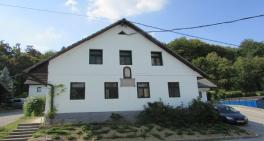
The center’s Slovene Research Initiative (SRI) successfully completed its third year of faculty exchanges between
Ohio State and the Research Centre of the Slovene Academy of Sciences and Arts (ZRC SAZU). The main goal of SRI is to promote interdisciplinary and/or international collaborations between Slovenian scholars and Ohio State faculty to increase the scholarship on Slovenia and the larger Balkan region.
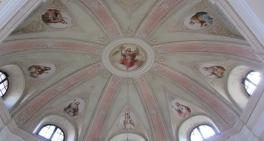
From Ohio State, Mary-Allen “Pasha” Johnson, curator of Slavic Early Printed Books and Manuscripts at the
Hilandar Research Library and assistant professor in the Ohio State Libraries, traveled to Slovenia in September 2016 to take part in the SRI for the second time. She continued her work in the Manuscript and Rare Book Department of the National and University Library (NUK) in Ljubljana, researching the Jernej Kopitar Collection of Slavic Codices and examining numerous archival collections related to Kopitar.

My eagerly awaited return to Slovenia had a less than auspicious beginning when the Adria Airways flight inexplicably arrived three hours late to Amsterdam. After an additional
delay while the ground crew cleaned and refueled the plane, we set off for Ljubljana. Happily, Luka Vidmar, chair of the Slovenian half of the SRI exchange, had monitored the flight information and was there to greet me at the airport. He then helped to settle me back in the Dom podiplomcev (post-graduate residence) in a studio apartment. One of my suitcases decided to weekend in the Netherlands, but once it was delivered, the logistical aspects of my stay ran fairly smoothly.
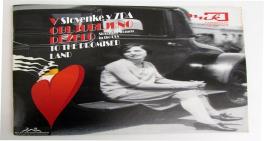
I was very pleased to renew my acquaintance with my NUK colleagues — Marijan Rupert, Matjaž Lulik, Samo
Kristan, Milan Štupar and Zoran Kuder — and I immediately plunged into my research. I also greatly benefited from the collegiality of the two Slovene scholars who had participated in the SRI this past year: Jerneja Kavčič, a Classics professor at the University of Ljubljana, was at Ohio State during October 2015; and Željko Oset, an historian from the University of Nova Gorica, spent much of August 2016 examining the archives of the Society for Slovene Studies (housed in the Hilandar Research Library) for his interest in “connections and communications among Slovene immigrant scholars in the United States after World War II.”
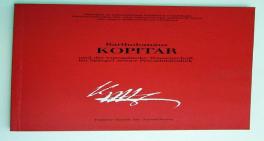
Each went out of their way to introduce me to potential colleagues, show me around, and took the time to
discuss both the scholarly and the mundane over coffee or lunch. One afternoon Jerneja and I traveled by bus to Repnje, the birthplace of “Jarnej” (sic) Kopitar; another day Jerneja gave me a tour of her hometown, Škofja Loka, a medieval settlement northwest of Ljubljana. When she showed me around the Classics department in the University of Ljubljana’s Faculty of Arts, we ran into her fellow philologist, David Movrin. Jerneja and David presented the Ohio State Libraries with a two-volume set of articles on the fate of classics under communism that resulted from a joint project between Slovene and Polish scholars. It became my bedtime reading: I enjoyed the liberal sprinkling of quotations from classical authors in the descriptions of the party’s ideological struggle with Latin and Greek philosophy and culture, and recognized a number of the scholars featured in the books who are well known in Slavic studies, e.g., Dimitŭr Angelov, Georgi Bakalov, Vladimir Beneshevich, Veselin Beshevliev, Ivan Duichev, Bogdan Filov, Nikodim P. Kondakov, Vasilka Tapkova-Zaimova et al. See Classics and Communism: Greek and Latin behind the Iron Curtain and Classics and Class: Greek and Latin Classics and Communism at School.
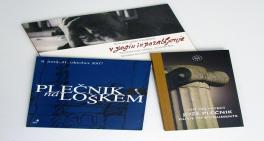
Jerneja arranged for me to meet Milan Lovenjak, the head librarian of the Central Humanities Library of the
Faculty of Arts, who oversees 18 departmental libraries. I had time to tour briefly the libraries of the departments of Classical Philology and Art History, but lingered with Anka Sollner Perdih and Urška Skalicky in the library for the department of Slovenian Studies and Slavistics. Urška had pulled a number of books in advance of my visit related to the research interests of Ohio State faculty and students, which was very informative. They presented me with a booklet published on the occasion of the department’s 90th anniversary.
Through Željko I met Ana Toroš from the University of Nova Gorica, who has a fascinating multi-media and multi-lingual (Slovenian/Italian/Friulian) project involving the Slovenian poet from Trieste, Alojž Gradnik. She has published several articles in Slovene Studies: Journal of the Society for Slovene Studies.
During his weekly visits to Ljubljana, Željko organized for me tours of the archives and libraries where he conducts his own research. At every stop the scholars and staff warmly welcomed Željko back from his trip to Ohio, and extended their hospitality to me as well. Gregor Jenuš, who heads the Sector for Special Archives, gave me an extensive tour of the Archives of the Republic of Slovenia from its foundation to the present day. I later returned on my own to view the file that the archives has on Kopitar.
I spent more than an hour with Žarko Bizjak, assistant director, and Hana Habjan, archivist, of the Historical Archives Ljubljana talking in general about archives and researchers in Slovenia and in the U.S. Hana had pulled some material that she thought would interest me, so I was able to view Kopitar’s grades from grammar school and high school, and a diploma in Serbian issued to the Slovene academician Janez Bleiweis by Alexander Karadjordjević (prince of Serbia, 1842-1858)! They presented me with a book on the history of the archive.
The last week in September Željko took me to the Institute of Contemporary History on Konkresni trg (‘Congress Square’). Igor Zemljič, head librarian, took me through the building, showing me the comprehensive collection of Slovenian newspapers and journals, the formidable collection on Nazi war propaganda that is surpassed only by holdings in Germany and the U.S. Igor had also prepared an exhibit for me of the rare books that had been found in the stacks of the institute’s library, which are described in an exhibit catalog that he gave me for Ohio State Libraries.
Damijan Guštin, the director of the Institute of Contemporary History, made a point of coming by to welcome me in person. Jurij Hadalin and Mojca Šorn showed me the ins and outs of “Sistory,” the institute’s open access digital resources, which includes a rich and varied number of materials from the Stenographic Notes of the Senate of the Kingdom of Yugoslavia to official gazettes, official data, handbooks on education, documents of the People’s Revolution and resources on the history of the 20th century. Much of the current scholarship on contemporary history is published in both Slovenian and English.
The day before I left Slovenia, I presented some of my research on Jernej Kopitar at the monthly meeting of the SAZU Historical Seminar. The lecture was held in a former palace that now houses the institutes of art history and music. Seating for 30 in parlor chairs was arranged in a square room with an ornate crystal chandelier, a ceiling painting, floor-length curtains, historic portraits and an antique mirror on the walls. I was pleased with the interest in my topic and grateful for some of the helpful comments, and I look forward to following up on some of the recommendations during future research trips to Slovenia.
My visit to Slovenia was highly successful and rewarding, not only because of the rich collections of materials in Ljubljana’s archives and libraries, but also because, being a SRI grantee, I have access to an invaluable network of scholars, researchers, archivists and librarians.
If you search the Ohio State Libraries’ online catalog by title for “Slovenia Collection,” you will see some of the books I purchased as well as gift books donated by archivists, librarians, university faculty and researchers from the Slovene Academy of Sciences and Arts I met while I was in Slovenia this summer. For the most part, according to the WorldCat library database, many of these are the first copies of these books available in the United States.
We now have three books about the Slovene architect Jože Plečnik (1872-1957), one of which is a general guide to his works in Ljubljana and Slovenia. The Architect Jože Plečnik: Guide to Monuments includes a photo of the reading room of National and University Library (NUK) after an Italian airplane crashed into the building in January 1944. Although the Greek books and manuscripts were reportedly among the collections destroyed, the damage was not as extensive as it could have been, because Plečnik designed the building with two inner courtyards. The other two books on Plečnik are catalogs from exhibits held in Ljubljana and in the medieval town of Škofja Loka during 2007 to commemorate the fiftieth anniversary of the architect’s death.
NUK’s bookstore was a treasure trove of catalogs showcasing the library’s holdings through past and current exhibits. The Slovenian-English catalog for this summer’s exhibit, Slovenian Women in the USA: To the Promised Land, notes that “[e]very summer, the National and University Library traditionally organizes an exhibition dealing with emigrants and Slovenians abroad.” The catalog is very informative, reflecting the exhibit’s general comments on immigration to the U.S. and highlighting the personal stories of Marija (Mary) Krek Bizyak, Antonija Baraga Höffern, Apolonija Pirc Noč, Marija Trobec, Katka Zupančič (neé Vrtačič), Angela Gospadarič, Josipina “Pepca” Janežič, Marie Prisland, Anna Praček Krasna, Mary Jugg Molek, Milena Šoukal, Rose Mary Prosen, Mara Cerar Hull and Irene M. Planinšek Odorizzi. The catalog has numerous photographs from the exhibit, although an image of my favorite item, the Ojibwa deerskin moccasins from the collection of Antonija Baraga, “officially, the first Slovenian woman in the USA,” is not included.
Two additional catalogs of past NUK exhibits are now available at the Ohio State Libraries: 1) Walter Lukan’s Jernej Kopitar (1780-1844) and European Science in the Mirror of His Private Library: A Guide to the Exhibition; and 2) Tomislav Vignjević’s 2001 exhibit of engraved illustrations from incunabula printed in Nürnberg, Augsburg, Speyer, Strasbourg, Basel, Ulm, Mainz, Rome, and Venice that are housed in NUK and the Seminary Library in Ljubljana, the Franciscan monasteries in Kamnik and Nazarje, the Diocesan Archives in Maribor, and the Provincial Archives in Piran.
The Research Center of the Slovene Academy of Sciences and Arts sent two faculty members to Ohio State, Zeljko Oset in August and Drago Kunej in October and November 2016.
Zeljko Oset, an assistant professor of history at the University of Nova Gorica, used his time in Ohio to continue research on connections and communications between Slovene immigrant scholars in the United States following WWII.
Drago Kunej, an assistant professor and Head of the Institute of Ethnomusicology at the Research Center of the Slovenian Academy of Sciences and Arts, conducted research in both Columbus and Cleveland on old recordings of Slovene polka music made by Slovene immigrants in Ohio. In our spring 2017 Newsletter, we will feature more information on Drago’s research.
SRI is now accepting applications for the 2017 Ohio State Faculty Exchange. The deadline is Jan. 13, 2017.
